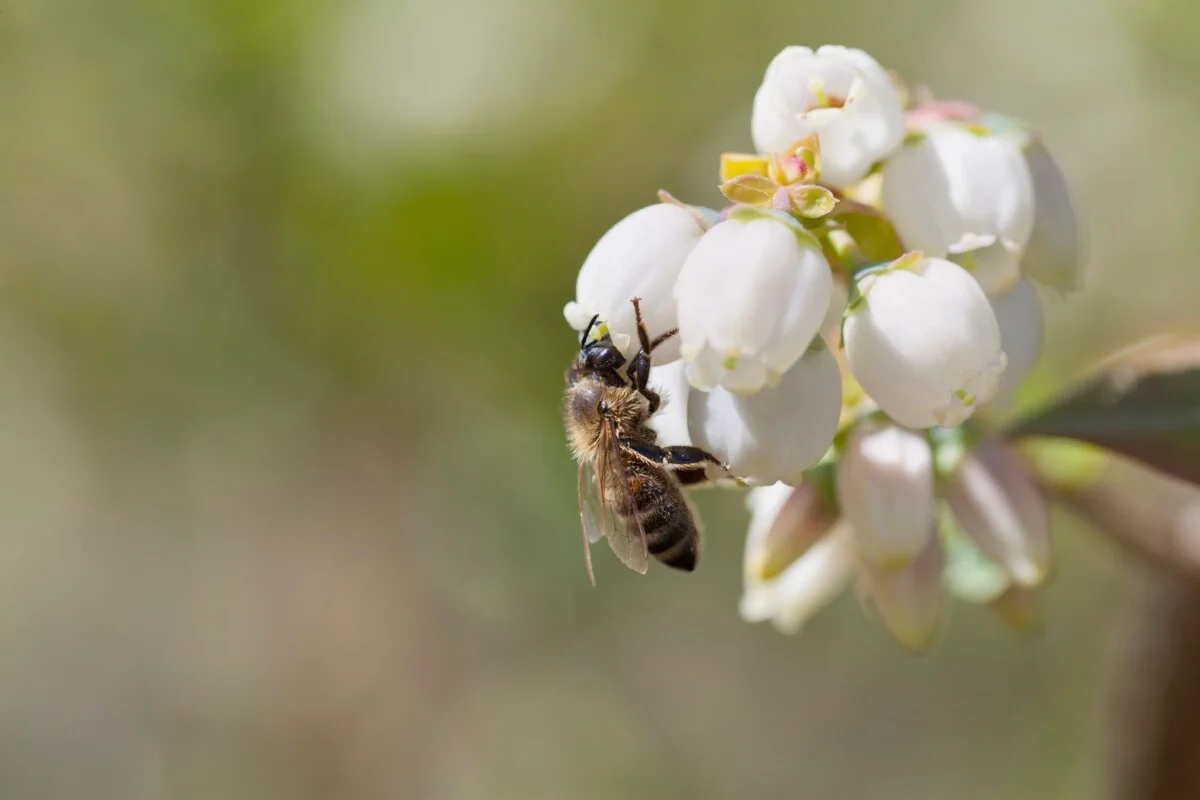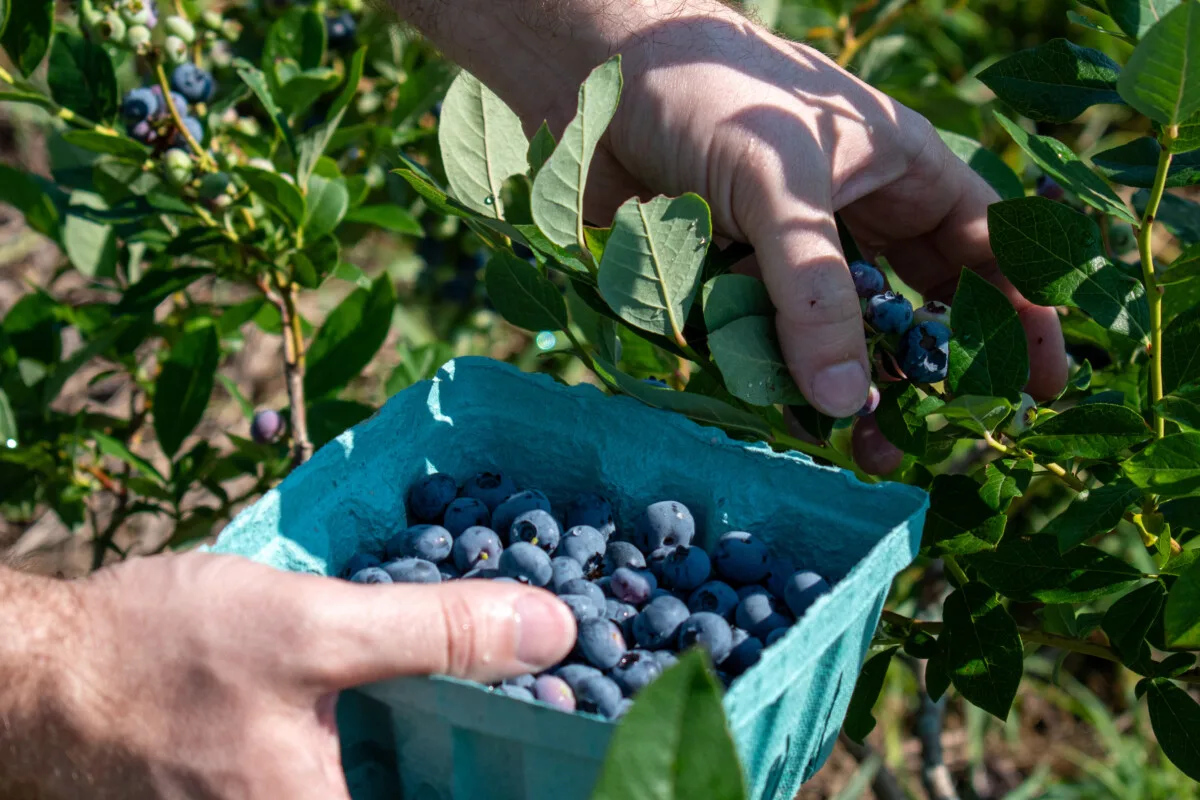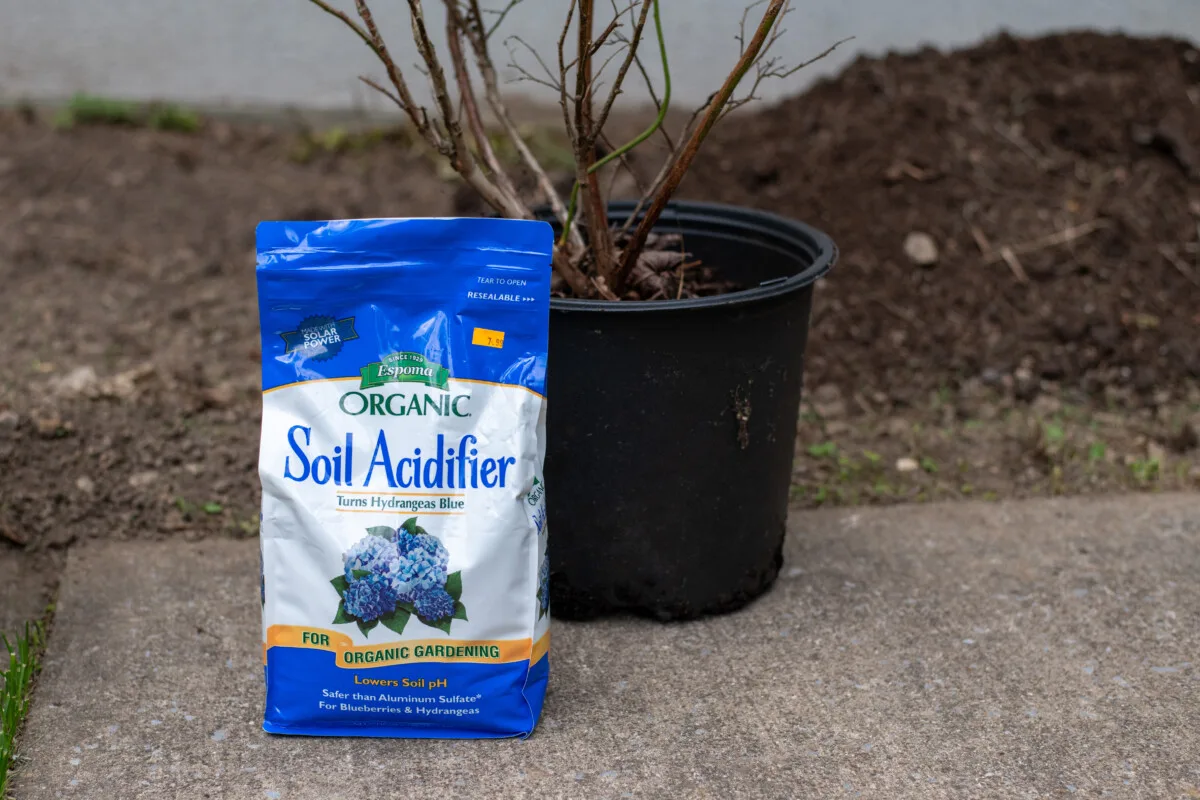
There comes a point in every blueberry lover’s life (usually when you’re at the U-pick farm or the farmers market) where you think, “Why don’t we grow our own blueberries?” This thought leads to a trip to a local nursery or browsing the offerings of an online nursery.
Before you make that purchase, you need to read this guide.
Blueberries are ridiculously easy to grow once you get them started. But there are a few things you need to get right in the beginning to enjoy a lifetime of delicious blueberries in your backyard.
(Don’t worry if you’ve already bought blueberries and you’re doing your homework after the fact. We’ll get you back on track as well.)
Blueberry Types

There are three blueberry types: high and low-bush and rabbiteye. Most of us will be growing high-bush blueberries.
When you think of Maine’s wild blueberries, those are low-bush blueberries. They stay small and compact, growing close to the ground, spreading each year and producing lots of tiny, flavorful berries. They rarely get higher than 2-3’ tall but can end up covering large areas.

If you’ve ever stumbled upon a patch in the woods, you know what I mean.
High-bush berries are the blueberry bushes most of us think of. These are large shrubs that grow anywhere from 5-12’ wide, depending on the variety. The plant won’t spread over the ground over time. It will, instead, grow taller and bushier.
For those of you in the Southern states, you’ll likely be growing rabbiteye (Vaccinium virgatum) blueberry bushes. These are much taller than most high-bush varieties, and they bloom earlier in the season.
Blueberry Growing Zones

You can grow blueberries pretty much anywhere in the United States – from zone 2 to 10. (Yay!) Like most things, if you live in either end of those growing zones, you’ll want to look for berries that are rated specifically for your area.
Purchasing berries locally means you’ll be getting berries that are perfect for your growing zone. If you’re purchasing from an online nursery, see if you can filter the results for your zone.
When to Plant Blueberry Bushes

Technically, you can plant blueberries any time of year when frost and freezing temperatures aren’t an issue. But the best time to plant them is in early spring or fall; that way, you aren’t interrupting the fruiting cycle. If you plant the bush while it has berries on it, be prepared to lose some or all of the berries due to transplant shock.
If you’re planting in the spring, you need to do so well after your last frost date. For the fall, be sure to plant early enough for the plant to become established before the first frost. You might also want to protect the blueberry bush during the first winter.
Blueberry Pollination

When choosing blueberry bushes, you need to be aware of how each variety is pollinated. There are both self-pollinating blueberries and cross-pollinating blueberries. The latter requires not only a different variety to pollinate with but also one that blooms around the same time.
This is why it’s a good idea to purchase blueberry bushes from a reputable local nursery. They can tell you which bushes will cross-pollinate well. For instance, when choosing our Chandler bush, we were advised that Bluecrop and BlueRay were good bushes with which to cross-pollinate.
Choosing the Right Location

In the ground or containers?
If you’re looking to get more than a handful of berries, the best place to plant blueberries is in the ground. While there are quite a few hybrid varieties these days that are intended to be grown in containers, you won’t get the same yield as you would from a large bush planted in the ground.
Of course, if all you want are a few breakfasts each year with blueberry muffins or blueberry pancakes, then container-grown blueberries can be the way to go. If container-grown blueberries are your only option and you want a bigger yield, you’ll need more bushes.
Sun & Soil

Blueberries need well-draining soil and plenty of sun, a minimum of six hours a day. They do best in a spot that receives plenty of bright morning sun, as they can’t tolerate the intense heat of afternoon full sun.
Planting them somewhere that’s shady means you’ll end up with fewer berries.
Also, keep in mind that many blueberry varieties have leaves that turn a beautiful, fiery red each fall. You don’t have to tuck blueberries away on the edges of your yard. They can be an ornamental part of your landscape as well as an edible one. Who doesn’t love having more edimentals in their yard?
Unless you have perfect soil, it’s a good idea to add some organic material, such as compost or mulch. You’ll also want to loosen the soil around the area where you’re planting your bushes. This will improve drainage and allow them to establish a wide root system. Blueberry bushes have shallow root systems, so it’s more important to go wide rather than deep.
And now we come to the big soil bother when it comes to growing blueberries.
The Importance of Acidic Soil for Blueberries

Before you pick up a shovel, it’s important to talk about acidic soil. Acidic soil is a must if you want thriving blueberry bushes (read that as not dead), and lowering the pH of your soil isn’t something you can do overnight.
If you need to lower the pH of your soil, then it’s best to start a year before you plan to plant blueberries.
Acidic soil is the key to healthy, long-lasting blueberry bushes, probably more so than fertilizer. That’s because blueberries rely on certain trace minerals that can only be absorbed through acidic soil.
Okay, Tracey, why can’t I add more of those minerals to my soil instead of fussing with making it more acidic?
Good question.
Depending on the pH of the soil, certain nutrients are more readily absorbed by plants.
As your soil becomes more alkaline, the usual nutrients found in fertilizer are more readily available to plants – nitrogen, phosphorus and potassium. You’ll notice that most of your garden vegetables do well in soil with a pH between 6.0-7.0. That’s because all the nutrients they need are easily accessed in the soil.
However, as soil becomes more acidic, those nutrients become harder for plants to take up, while other nutrients become easier, such as iron and manganese. (Guess which nutrients blueberries need to thrive.) Plants have adapted to grow in the soil of their natural habitat. And you’ll note that wild blueberries grow in the forests of North America, where plenty of conifers keep the soil acidic.
If you plant blueberries in soil that’s too alkaline, they will quickly become deficient in key nutrients (you guessed it, iron and manganese). If left that way for too long, the plants will die. That’s why, if you want to do this right, it’s best to acidify your soil before you plant blueberries.
Elemental sulfur is hands down the best way to acidify your soil.
For many gardeners, myself included, Espoma Soil Acidifier is our go-to. It’s easy to find, inexpensive and easy to use.

Of course, you’ll need to test your soil first to know the pH. PH meters are relatively easy to find and inexpensive. A digital pH tester is going to be the most accurate and easiest to use and will only set you back $20 to $30. (It’s one of those gardening tools that once you have it, you’ll wonder how you did without it.)
Begin by working one cup of elemental sulfur into a circle about three feet in diameter for each blueberry bush you intend to plant. Do this every three months, testing your soil pH until you’ve reached the ideal acidity. Once the soil has reached a pH between 4.0-5.5, you can plant blueberries.
What if You’ve Already Bought Blueberry Bushes?
Ah, hello, impatient gardening friend, join my club. I, too, bought blueberry bushes only to find out our soil was more on the alkaline side. Not to worry. There are a couple of things you can do while you lower your soil pH.
First, continue to acidify your soil with elemental sulfur, as mentioned above.
Transplant your blueberry bushes into a large container using a potting mix specifically created for acid-loving plants. Growing your blueberries in a container for a year will allow the plant to grow without becoming root-bound in its original nursery pot. Coast of Maine makes a pretty good potting blend specifically for acid-loving plants.
If you live in a climate with cold winters, you’ll want to mulch around the base of the container to protect the roots from frigid temperatures. We covered our potted blueberries in leaves we raked up in the fall, and they wintered over fine.
Instantly Acidify Your Soil
If you’ve already planted your blueberry bushes and your soil is not acidic, you’ve got a problem on your hands. You need to acidify your soil immediately, while still amending long-term. Scratch in one cup of elemental sulfur around the drip line of each blueberry bush and test the soil quarterly, applying more sulfur as needed.
While you wait, you need to add acid weekly to your soil so that your plants can take up the necessary nutrients.
Luckily, you probably already have what you need in your kitchen – plain white vinegar.
Mix one tablespoon of plain white vinegar with one gallon of water and use this to water your blueberry bush each week. (One gallon of this mixture per blueberry bush per week.) This will temporarily lower the pH of your soil. But you’ll need to keep this up weekly until the elemental sulfur does its job. Many commercial blueberry growers use this method as it’s cheaper than amending acres of soil.
Planting Blueberry Bushes
Now that you’ve got your soil ready, picked out the perfect variety of blueberries and chosen the perfect location, it’s time to plant your blueberry bushes.
Digging the Hole

Remember, blueberries have shallow root systems that spread wide rather than deep. You want to dig a hole that is roughly three times as wide as the pot the blueberry bush is in. Dig deep enough to accommodate some compost in the bottom of the hole but also shallow enough that the crown of the bush isn’t below the soil level.
Ideally, once you have planted the bush, you want the top of the soil in the nursery pot to still be visible.
Loosen up the soil surrounding the hole as well to encourage root growth and good drainage.
Compost & Sulfur

It’s a good idea to add compost and more sulfur to the bottom of the planting hole. You can also add a blueberry-specific fertilizer. (I use the Espoma Holly-Tone) Mix everything together.
Planting

Place the blueberry bush in the hole and backfill around it. Carefully tamp the soil back in place. You want to ensure there are no air pockets around the roots, but you don’t want to compact it too much.
Water in the Blueberry Bush

Like with all transplants, you’ll need to water in the new plant. Give it a good soaking. Water it well once a week until the plant is established (usually a month).
Blueberry Maintenance

You’ll need to fertilize and prune your blueberry each year to ensure continued growth. Pruning might be intimidating, but it’s not that hard. I explain how to do it here. (You’ll want a good, sharp pair of pruning shears, like my trusty Falcos.) And fertilizing blueberries is explained here.
If you want to know all the secrets for getting buckets of blueberries each year, you should read:
9 Tips for Growing Buckets of Blueberries Year After Year
Keeping Your Soil Acidic
Once you’ve reached the appropriate soil acidity, you’ll need to take steps to keep it that way. The best way to do that is to test your pH every three months and top-dress your plants with elemental sulfur as needed. Scratch it into the surface of the soil a bit around the plant’s dripline (the diameter of the upper shrub).
As I said in the beginning, once you get them planted, blueberries are pretty easy to care for. Hopefully, with this guide, you will be well on your way to enjoying decades of delicious blueberries.

Get the famous Rural Sprout newsletter delivered to your inbox.
Including Sunday musings from our editor, Tracey, as well as “What’s Up Wednesday” our roundup of what’s in season and new article updates and alerts.

